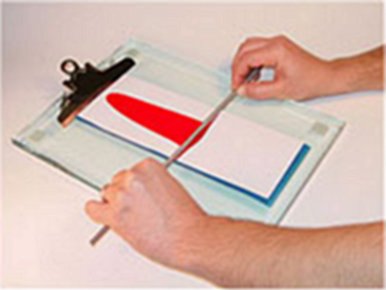

- #Drawdown paint portable
- #Drawdown paint professional
Each type of movement is described by phenomena described as shear forces. Liquid latex paints are subjected to various types of factors that set them in motion, such as mixing or spreading onto a surface. Additionally, the additives must ensure that there is no syneresis, no spattering, good leveling, etc.
#Drawdown paint professional
But the market expects latex paint to have a number of properties, and rheological additives must satisfy these expectations, including easy application with a brush, roller, or spray (especially by people who are not professional painters). The mere achievement of a resting viscosity, the so-called low-shear viscosity, is not difficult and usually comes down to a single thickener.

It is an extensive range of knowledge concerning not only rheological additives (thickeners), but their interactions with other raw materials in the formulation.ĭesigning latex paint formulations is a task that is often difficult at the stage of selecting thickeners responsible for the entire range of rheological efficiency. Rheology in its scope of research covers everything related to the flow and properties of paints during mixing, pumping, application (brush, roller, spray, etc.), or mixing after adding colorants or diluting with water.

Regarding latex paints, this is the science of flowing behavior during storage and handling, both during and after application. Ready to explore the complete range of Sherwin-Williams color samples and ColorSnap tools? Go to is a lore about the flow and deformation of substances. If you’re going to invest time and effort in wet samples, it’s best to ensure you and your client have already narrowed your options. “Wet” color samples are most useful for “closing the deal” on color decisions.
Can help move conversation quickly from color to paint and paint finish choices. They come in small Twist-n-Pour containers that cover approximately 75 sq. Color to Go samples can be picked up from one of our 4,200+ stores in any of our 1,500+ colors. Color drawdowns (a large painted sample from the can of tinted paint to show actual color and sheen). ColorSnap Visualizer is a great tool for helping clients explore on their own. Least accurate and consistent, especially when printed outĭigital color samples are best for your online mood boards, CAD work and for getting clients options quickly, no matter where you are. Digital color files are the least accurate and consistent, as they are highly affected by your screen resolution, desk lighting and even the age and condition of your digital device. Color swatches on the Color Detail Pages on. Colors in the ColorSnap Visualizer on your desktop or mobile device. They’re dimensional and tactile, making them ideal for giving clients a contextual sense of how paint color fits into overall project choices, from fabrics to finishes. Paper samples are a designer’s workhorse. Easy to tape up to the wall and hold against textiles, finishes, etc. (These will have a slightly raised surface.) Many specialty color cards - including our Colormix Color Forecast - are “chipped,” which creates even more color fidelity. Sherwin-Williams color cards, such as the Colormix ® Color Forecast. #Drawdown paint portable
4"x4" samples in your ColorSnap Portable or Desktop Kit. Color chips (2"x3") from the ColorSnap ® Studio in-store display. By using two or three different sample types at each design stage with a client, you increase color confidence and reduce second-guessing.” “My advice is to use more than one color sample type whenever possible in your design process. “The goal for a designer is always to eliminate color surprises,” says Sue Wadden, Sherwin-Williams Director of Color Marketing. Learn about the three types of color samples so you can make the best decision on which to use. But how practical is that on a day-to-day design basis? The good news is that professional color samples can get you much closer to making an informed, confident color specification prior to painting, as long as you’re savvy about what each sample type can and can’t offer. The only way to know for sure how a color will perform is to paint a surface and observe it under different lighting conditions. Learn about the three different types of color samples - digital, paper and “wet” - so you know which to use in different scenarios.







 0 kommentar(er)
0 kommentar(er)
